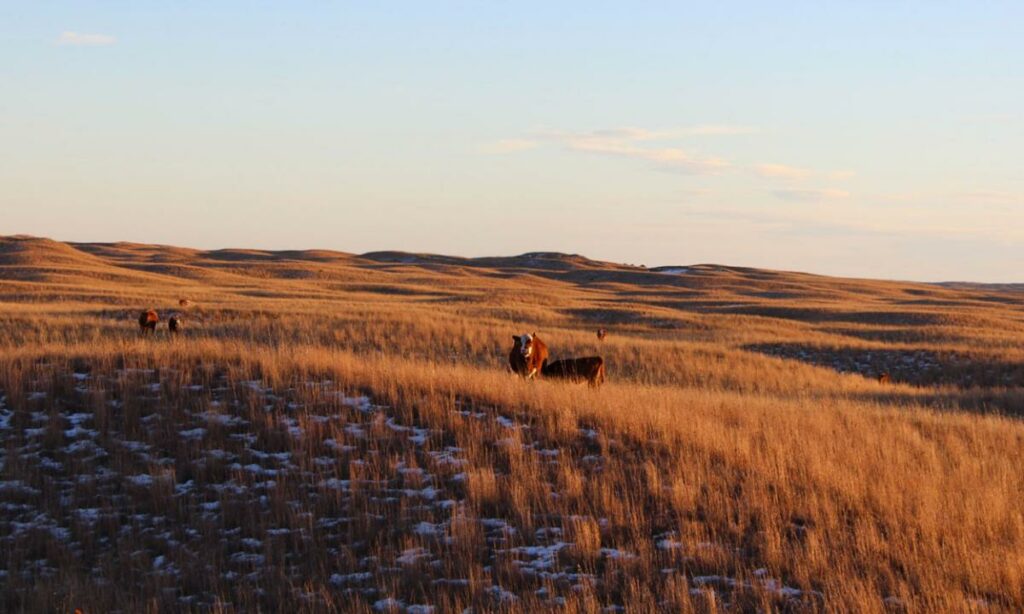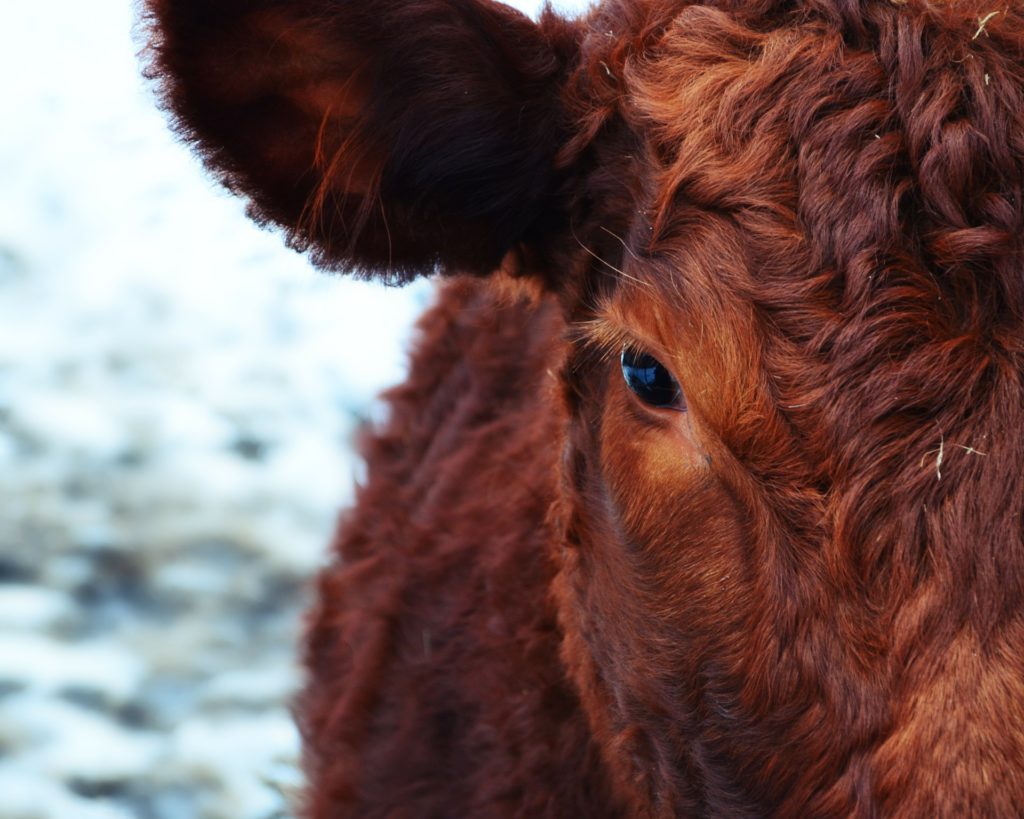Do I have enough grass for winter grazing?
This year has brought significant improvements to much of South Dakota’s pastures after a period of drought and poor forage production. This improvement in pasture conditions combined with fall precipitation meant increased opportunity for late-season growth. So, it is likely that many pastures were able to experience some recovery following the summer growing season. Those pastures may have a decent amount of grass stockpiled going into the dormant winter season. Winter grazing of stockpiled grass produced during the growing season can help extend the grazing season and can reduce winter feed costs.
Grass is a renewable resource for cattle producers, as long as there is rain and active management. Regular assessment of pastures during the growing season is an essential component to the usefulness of grass as a feed source. Before winter grazing, assess your pastures to determine how much grass has been stockpiled, and if applicable, the level of recovery from the last grazing event. It will also be helpful to have an understanding of the plant species in the pasture, because some grasses (such as invasive cool seasons) will have lower nutritional value than others.
These assessments can indicate whether winter grazing is an opportunity or not. Pastures should have a reasonable amount of stockpiled grass from the growing season to allow additional grazing to occur during the winter. To prevent overgrazing, the ‘take half, leave half’ rule of thumb is also a good strategy to use for winter grazing.
Will winter grazing impact next year’s growth?
When done properly, winter grazing typically has little to no impact on subsequent year’s production. This is because most grasses will be dormant during winter grazing. When the grasses enter dormancy, they store their carbohydrate reserves below ground in the root system. During the spring green-up, these underground reserves are what the plant relies on to begin growing again until producing enough leaves to photosynthesize with. Therefore, when the grasses have gone dormant for the season, cattle can essentially graze those plants without causing damage.
Although the grasses are hardier while dormant, overgrazing is still a concern that can impact pasture health in the following growing season. Regrowth could be compromised if dormant grasses are grazed too short and if sufficient soil cover is not maintained. It is important that enough cover is left on the surface in order to: 1) protect the soil from erosion potential and 2) to increase soil moisture.
Unprotected soil is susceptible to erosion and invasive species/noxious weeds in the subsequent growing season. Grass cover that is left on the soil surface will act like a sponge to retain moisture from precipitation during the winter. Approximately 4 to 6 inches of stubble should be left to capture moisture. Bare ground does not collect moisture easily and any snowfall on bare ground is susceptible to disappear through wind loss. Producers should monitor ground cover within their pastures to ensure there is adequate litter on the soil surface.
How can I manage my pastures for winter grazing in the future?
It is important to utilize available resources, such as pastures, conservatively and wisely. Several strategies are available to incorporate successful winter grazing on your operation. With proper recovery times and regrowth, one pasture can be grazed multiple times. Pastures can also be left un-grazed during the growing season and saved for grazing during the dormant season. Depending on the cost of hay, saving pastures for winter grazing could be cost effective. Regardless of the strategy, the value of pasture can be increased by winter grazing.
Healthy rangelands offer better grazing.
Diverse and healthy native rangelands hold much greater nutritional value during the dormant season when compared to pastures with introduced species. For example, western wheatgrass, a native cool-season grass, has excellent nutritional value when dormant. Some producers have found success with not grazing western wheatgrass pastures during the growing season in order to stockpile them for winter grazing. Cattle will require less protein supplementation when grazing the native grass. In contrast, smooth bromegrass, an introduced and invasive cool-season grass, has very poor nutritional value when dormant. Cattle will require more supplementation when grazing the invasive grass.
Two grazing seasons, one pasture.
It is possible to graze pastures during the regular growing season and again during the dormant season. With this strategy, one pasture can yield two grazing seasons. However, it is essential to evaluate the amount of recovery growth that the pasture was able to stockpile prior to winter grazing. The influence of cool-season or warm-season species will also impact recovery growth.
Pastures that were grazed in late summer or early fall likely had much less opportunity to recover. As a result, they are likely to have much less dormant forage available. In contrast, pastures that were grazed early in the growing season are likely to be in better condition for winter grazing. This is because the grasses hopefully had enough precipitation and recovery time for decent regrowth. Grazing earlier is likely to produce a more adequate stockpile of dormant forage available for winter grazing.
Invest in high-yield grass savings.
Another option is saving pastures for later use during the dormant season. Utilizing the rest rotation system during the growing season can provide extra benefit for winter grazing. This strategy rotates cattle through multiple pastures while leaving one or more completely un-grazed through the growing season. By allowing grass to remain un-grazed for an entire growing season, plant vigor, forage yield, and root stores reach their peak. As a result, there is more dormant grass to utilize during winter grazing, and carbohydrate reserves are maximized for the next growing season.
What do my cows need while winter grazing?
Winter grazing stockpiled forage does not eliminate the need to feed hay, especially during times of inclement weather and as spring cows advance in pregnancy. However, winter grazing can be used as a strategy to reduce the amount of hay required. Dormant grasses will typically contain less than 6% crude protein. As a result, cows should be provided with adequate supplementation to meet their nutritional requirements.
Source: SDSU Extension, Kaylee Wheeler, SDSU Extension Range Field Specialist. Additional Authors: Sean Kelly








